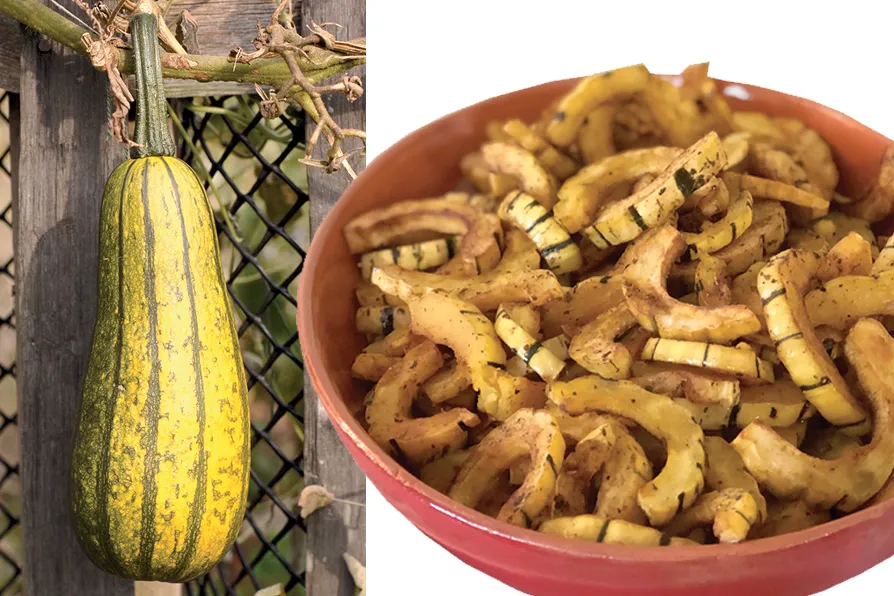The catastrophe unfolding in Gaza – where Palestinians are freezing to death in tents – is not a natural disaster but a calculated outcome of Israel’s ongoing blockade, aid restrictions and continued violence, argues CLAUDIA WEBBE
MAT COWARD rises over such semantics to offer step by step, fool-proof cultivating tips

 YUMMY: (L to R) Winter squash; Roasted delicata squash. Pic: (L to R) Derek Ramsey (Ram-Man)/Chanticleer Garden/CC and Sarah Stierch/CC
YUMMY: (L to R) Winter squash; Roasted delicata squash. Pic: (L to R) Derek Ramsey (Ram-Man)/Chanticleer Garden/CC and Sarah Stierch/CC
LET’S not tie ourselves up in sectarian debates about which squashes count as pumpkins and which pumpkins should properly be referred to as squashes, and just accept that hereinafter the term “winter squashes” means any member of the cucurbit family which, when mature, develops a hard skin.
It’s that thick rind over dense flesh which enables the fruit to be harvested in autumn and stored through the winter.
There are lots of varieties on offer in the seed catalogues. They vary in fruit size and shape, and in their outer and inner colour. More importantly in choosing which to grow, they do take up different amounts of space.
On a large allotment you might want to let a trailing squash loose to ramble where it pleases. In a small garden vegetable patch you’d probably be better off with a more compact bush variety.
Even the smallest will need a square yard of space, though.
The seeds are best started off indoors, from mid-April to mid-May, putting a single seed about half an inch (13mm) deep in a small pot full of peat-free multipurpose compost.
Keep them somewhere warm and light.
In late May or early June you can sow the seeds where you want them to grow, but it’s risky: slugs and snails will have a go at the young seedlings, and a sudden change in the weather can also cause problems.
During the summer, squashes grow rapidly and they grow a lot. To sustain that they need rich soil. Some people feed the plants, too, with tomato fertiliser or seaweed extract, but in well-manured ground I don’t think that’s necessary.
The traditional way to prepare the soil for squashes is to dig out a hole that’s a foot (30cm) square, then refill it with a mixture of the soil you took out and organic matter such as compost from a compost heap. That produces a slight hillock, into which you plant or sow the squash.
You may be relieved to hear that, with the growth in popularity of the no-dig gardening approach, a lot of gardeners no longer bother with all that, instead spreading the organic matter over the planting area in a mulch that’s two or three inches (5-8cm) thick.
One thing that is still compulsory — squashes must be grown in full sun. If they are in shade for any significant part of the day they will slow down or worse.
As late spring becomes early summer, plant out your squash having gradually accustomed it to outdoor temperatures. In most parts of the country this will be the last week in May or the first in June, but if the weather is at all chilly you should always go late rather than early. Even then, covering the plant with a cloche for the first couple of weeks won’t hurt.
All cucurbits need regular, generous watering — but only after they’ve properly got going. Too much water in the early days can cause them to rot.

MAT COWARD sings the praises of the Giant Winter’s full-depth, earthy and ferrous flavour perfect for rich meals in the dark months

MAT COWARD presents a peculiar cabbage that will only do its bodybuilding once the summer dies down












